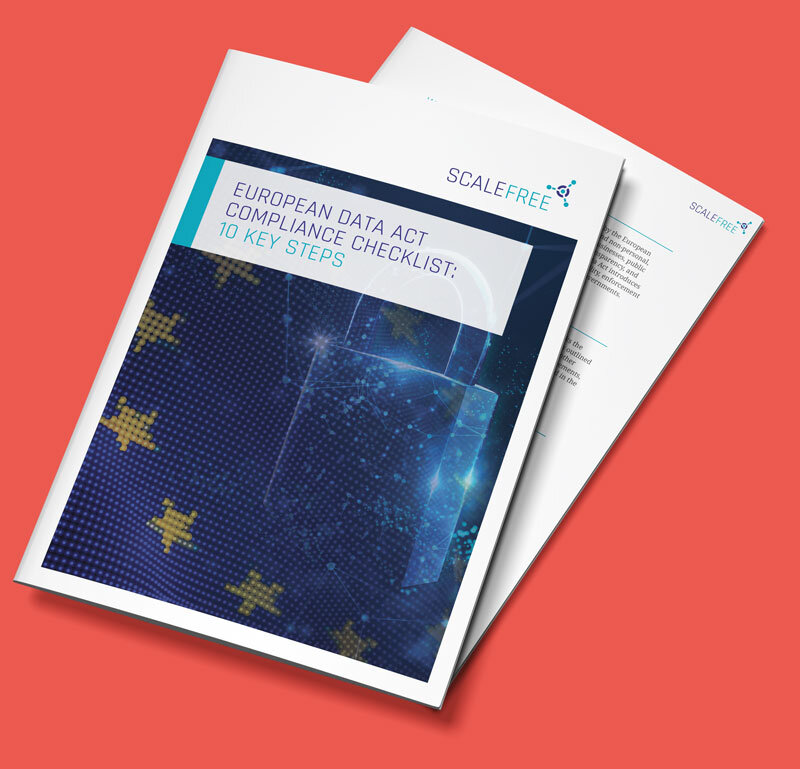Data Governance
The EU’s Data Act is on the horizon, promising to reshape how businesses access and utilize data, particularly industrial data. This legislation aims to foster a competitive data market, drive innovation, and ensure fairness in data sharing.
Key provisions include granting users control over data from connected products, enhancing fairness in data allocation, and safeguarding against unfair contractual terms. Complementing the Data Governance Act, these regulations lay the groundwork for an EU single market for data, positioning Europe as a global leader in the data economy.
Master Data Governance: Understanding the EU’s Data Act
Join us for an insightful webinar where we unravel the intricacies of the EU’s Data Act. Delve into the legal and technical obligations imposed by this landmark legislation and gain valuable insights into implementing compliant data platforms.
Understanding the EU Data Act
The Data Act, formulated by the European Union, represents a significant step forward in governing data sharing, access, and utilization within the digital economy. It aims to foster collaboration while upholding principles of fairness, transparency, and compliance with data protection regulations such as the GDPR. This regulatory framework provides guidelines for businesses, public sector entities, and research organizations, ensuring that data-sharing practices align with legal requirements and ethical standards.
Scheduled for enforcement on September 12, 2025, the Data Act mandates adherence to its provisions concerning data-sharing practices, contractual agreements, and operational procedures. Stakeholders must prepare to align their processes with the requirements outlined in the Data Act to maintain compliance and mitigate regulatory risks effectively.
The scope of the Data Act encompasses various stakeholders engaged in data-sharing activities within the European Union. This includes businesses of all sizes, public sector bodies, research organizations, and data processing service providers. Data holders bear the responsibility of ensuring compliance with the Data Act’s directives, promoting fair and non-discriminatory data-sharing practices while safeguarding privacy and intellectual property rights.

Master The Eu’s Data Act Today!
Ensure your business is ready for the Data Act with our comprehensive 10 Key Steps Compliance Checklist. Learn how to protect data, review contracts, and maintain interoperability.
Technical Challenges
Addressing technical challenges posed by the Data Act requires robust solutions that guarantee data integrity, security, and accessibility. Leveraging methodologies like Data Vault 2.0 offers a multi-faceted approach to data management, facilitating scalability, real-time capabilities, and efficient data architecture. By decoupling storage from delivery and implementing real-time data capture and processing, organizations can streamline compliance efforts and enhance data governance.
Implementing a Data Vault 2.0-based data platform enables organizations to meet the complex requirements of the Data Act effectively. By establishing a robust architecture for data ingestion, processing, and presentation, businesses can ensure compliance while driving innovation and agility in their data operations.

Figure: reference architecture for real-time Data Vault solution
Data Vault 2.0 architecture follows a multi-layer approach, consisting of the Staging Layer, the Enterprise Data Warehouse Layer, and the Information Marts Layer. This integrated approach ensures a harmonious synergy between technical and business objectives. In particular, to respond to the Data act requirements, in this case we are including a “message queue” that loads the data from source systems to our enterprise data warehouse “without undue delay,” i.e., real-time, near real-time, or with the delay stipulated by your specific technology and related services.
In leveraging a real-time or near real-time Data Vault 2.0 architecture for your data platform, you’re not just meeting the requirements of the EU Data Act but also laying the foundation for streamlined data management and enhanced analytics capabilities. By centralizing the processing and preparation of raw data from IoT devices, this architecture ensures that compliance with the Data Act is seamlessly integrated into your data infrastructure.
Additionally, in the Information Mart layer, we can create a specific Interface Mart to cater to security and accessibility requirements. Here, data can be flagged by various criteria such as device or user ID and access level. This enables users to either download the data upon request or visualize it directly through a dedicated app. The data will be as fresh as possible, as the Interface Mart can be generated as views built on top of our Raw Vault, which is updated “without undue delay.”
Moreover, by decoupling the data storage from delivery and employing real-time data capture and processing mechanisms, you’re not only facilitating adherence to regulatory standards but also enabling agile and responsive data analytics. These business rules could be implemented in your Business Vault and downstream layers. Hence, this approach ensures compliance and also sets the stage for harnessing the full potential of your data assets for driving innovation and decision-making across your organization.
Final Remarks
As the enforcement date of the Data Act approaches, it is imperative for organizations to prioritize compliance and adopt proactive strategies for data management. By embracing technologies like Data Vault 2.0 and adhering to agile development methodologies, businesses can navigate the regulatory landscape with confidence, harnessing the synergies between regulatory requirements and technological advancements to drive sustainable growth and innovation.
Check out our webinar recordings as we explore the intersection of the Data Act and Data Vault 2.0, offering insights and practical guidance for navigating the evolving data governance landscape.
Watch here for free: In English or in German
– Hernan Revale (Scalefree)
